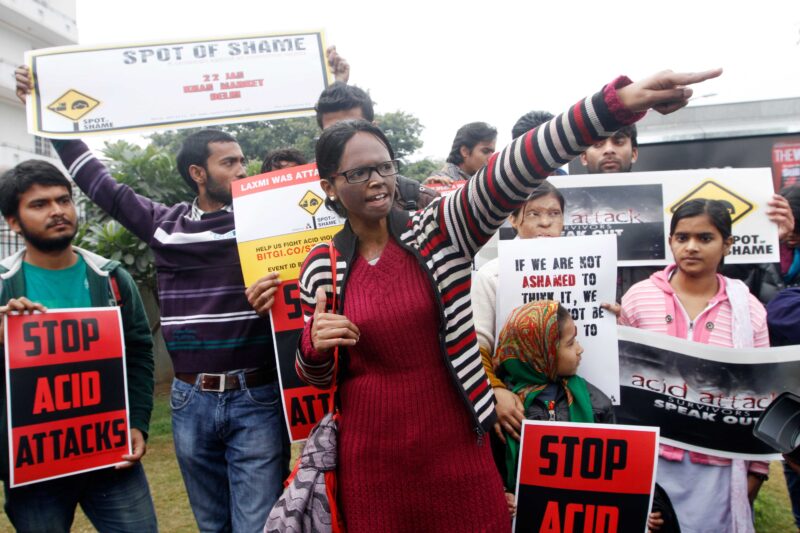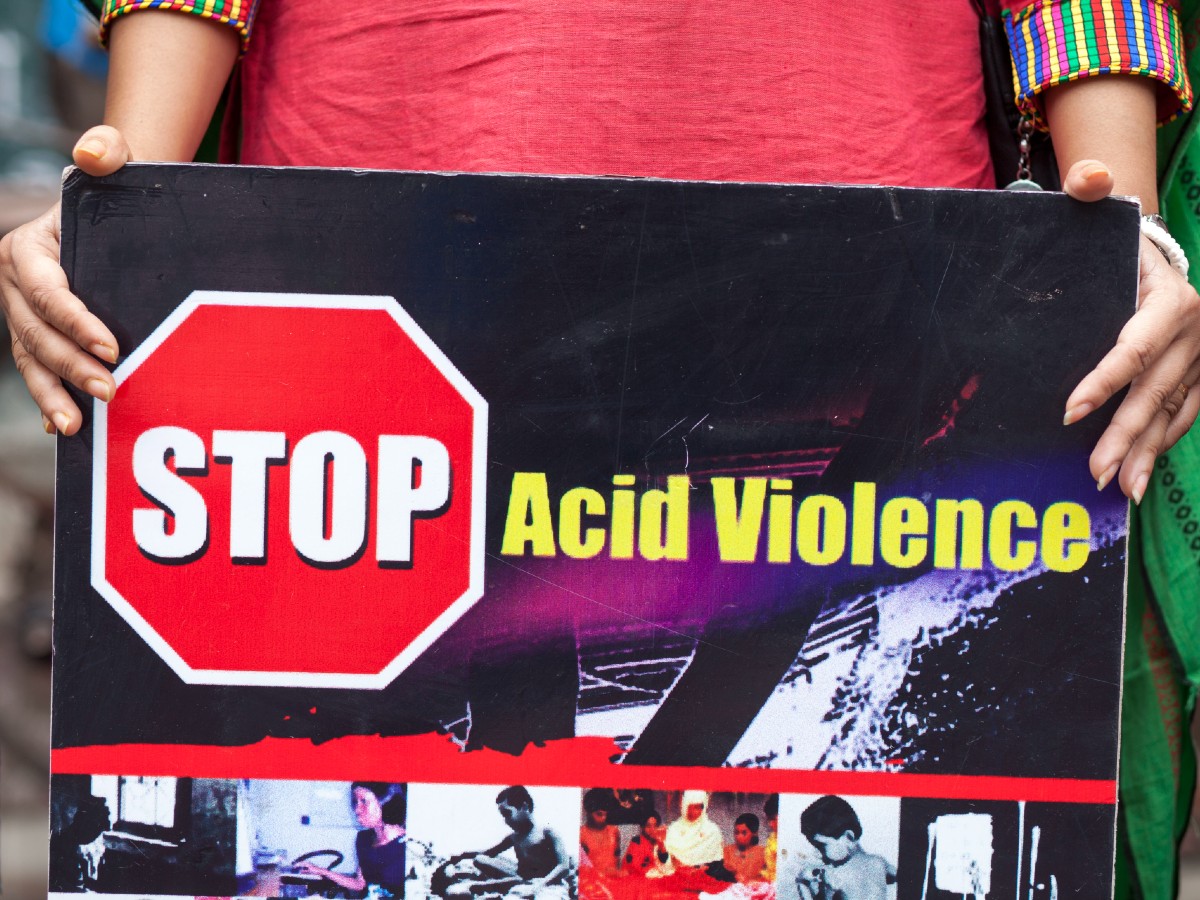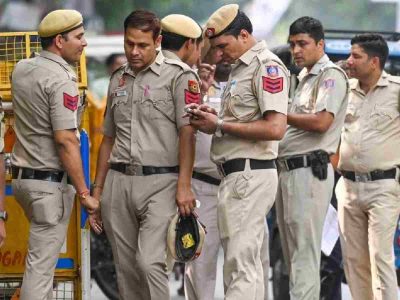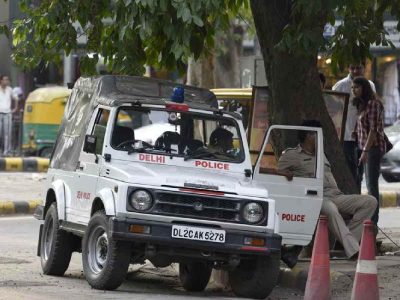On December 14, two masked men on a bike flung acid on the girl in Uttam Nagar near Dwarka minutes after she had left her west Delhi home for school, leaving her with serious injuries. She is currently under treatment at the Safdarjung hospital and initial investigation has found that the accused procured acid on Flipkart at Rs 600.
Three people — prime accused Sachin Arora and his two friends Harshit Aggarwal (19) and Virender Singh (22) — have been arrested in connection with the case.
Also read: Gory tales: How mutilated bodies are identified
Patriot deep dives into the heinous crime of acid attacks and its aftermath, shortcomings of laws and the challenges of investigation.
Little to no awareness
Survivors of acid attacks believe that the main roadblock is ignorance about not just the laws that regulate the sale and purchase of such corrosive substances, but also how to respond to such incidents.
“Usually, people don’t have any idea about how to respond during an incident of acid attack. Especially police, which is empowered by the state to be the first responders, have zero idea what to do with the survivor at the time of the incident. In the Dwarka case, people around her responded exceptionally well. They bathed her in water, which is why, she suffered 8% burns, yet her eyes got badly injured,” says Laxmi Aggarwal, a survivor.
Back in 2005, when Laxmi was 15-year-old, Naeem threw acid directly at her face from the backseat of a motorcycle, after she declined his marriage proposal twice. Laxmi fainted and after regaining consciousness, she tried to walk up and ask for help but met multiple road accidents. The incident disfigured her face, but her undying spirit led the battle for acid attack survivors, which eventually created a fresh set of restrictions on the sale of acid ruled by the Supreme Court.

“Acid attack survivors must be immediately drenched in water with the burning parts tilted low. Police just pick up survivors and dump them in hospitals. Many a times, these hospitals don’t even have burn wards. So, survivors lay there in sever pain and their injuries worsen. Unfortunately, police are not trained enough to deal with this crisis and there should be steps taken towards it,” she says.
Describing the complexity of the nature of the burn, the founder of Laxmi Foundation says, “Not all Burn wards treat acid attack survivors. Burn from fire and acid have different treatments. So, government hospitals are also less in number that are thoroughly equipped with treatment of acid burns. If acid injury remains untreated for 24 hours then it can burn the bone.”
“Through our campaigns, we found that majority of people are not even aware of the laws that prohibit the over-the-counter sale of acid and penalises sellers,” she says
In light of implementation, she says that existence of laws become pointless without their implementation. “It is the job of district magistrates. However, no inspection takes place at the local level to find shops that sell acid,” says Laxmi, who also won many national and international accolades for her work in the field.
“Intiatives are only taken up by survivors of a crime and not by society as a whole. Many a times, shopkeepers turn aggressive and argue that the acid is dilute so it wont harm. However, even diluted acid can take a life. Nowadays, there are innumerable products for cleaning bathrooms, so why do you still want acid? People will stop looking for acid when it is completely taken out of market,” she laments.
“Recently, a child brought mistook it for water and got it to school. Her friend expired after drinking from her bottle. Then, a man poured the same in his wife’s genitalia because she refused to go for a sex determination test. Such are the cases. But, people want to view everything from their prism of privilege,” she says.
What does the law say?
In 2013, the SC took cognizance of acid attacks and passed an order on the regulation of sales of corrosive substances. As a result, the Ministry of Home Affairs issued an advisory to all states on how to regulate acid sales and framed the Model Poisons Possession and Sale Rules, 2013 under The Poisons Act, 1919.
According to the MHA’s directions and the model rules: over-the-counter sale of acid is not allowed unless the seller maintains a logbook/register; The sale is also to be made only when the buyer produces a photo ID, to prove that s/he is above 18 years of age; Sellers are also required to declare all stocks of acid with the concerned SDM and the SDM can confiscate the stock and impose a fine of Rs 50,000 for a breach of directions.
The MHA asked states to make sure acid attack victims are paid compensation of at least Rs. 3 lakhs (Rs 1 lakh within 15 days and Rs 2 lakh within 2 months thereafter) by the concerned State Government/UT. To provide free treatment to acid attack victims in any hospital, public or private.
Trauma and treatment
“Treatment for acid attacks is a life-long process. There are surgery after surgery and it never stops. For example when are painting on a canvas and a drop of water falls on it, you have to start afresh. These delicate surgeries work similarly. There are injuries in layers that are treated over a period of endless years. Survivors go through 10-15 surgeries for each injured part. Besides, the success rate is also never 100% and it is painful,” she says.
“Whenever a survivor watches the news of another acid attack incident, it takes them back to their own experience. Survivors are caught in a loop of flashbacks. All this focus on the matter disappears after three weeks and then people forget us. It’s only until the matter is in heat,” the 32-year-old rues.
“Each surgery takes Rs 3 lakh, so not everyone can afford that. Our organisation sponsors treatment but a lot more needs to be done by the government. Especially, counselling of the survivors and their families. But we have left all hopes and expectations from it because even if they provide mental rehabilitation, they will do it over the corpse of a survivor,” says Laxmi, who further explains the procedure of surgery.
“The initial treatment is borne by the government and is free for survivors, but the rest is taken care of organisations like us. We raise funds for treatment of survivors. The government gives a compensation of Rs 3 lakh, but that ex-gratia is not released soon. First, they heal the burn, then fix the structure of the face by skin grafting and the final surgery is cosmetic. I have hardly seen any survivor reach the final stage of cosmetic surgery, which also has phases and takes years to complete,” she adds.
Dismal rate of conviction
According to the data by the National Crime Records Bureau, between 2016 to 2021 not even in 10 per cent of the cases pending for trials have there been convictions.
Shedding light on this, Laxmi says, “Cases linger for years. There has to be swift conviction for deterrence of the crime. Leave aside arrest and conviction, police dilly-dally registration of FIRs and sit on a case for months. When we ask for copies of FIR from survivors who approach us, they ask ‘what is that?’ The copy of FIR is needed everywhere – to demand compensation, at hospitals, in courts, everywhere. So this is the responsibility of the police.”
“A lot happens inside the courts. It is emotionally painful, draining and embarrassing. For example, during the hearing of my case, the presiding judge had said “see the guy is still open to marrying you, do you agree?’ I stood there shocked because at that time my life was destroyed by this man and the court, which is expected to deliver justice, is asking me if I agree to his marriage proposal. So, a lot happens behind the walls of the judiciary. A lot depends on the whims of the judges,” she adds.
Legal limitations
Until 2013, acid attacks were not treated as separate crimes. However, acid attacks were put under a separate section (326A) of the IPC and made punishable with a minimum imprisonment of 10 years which is extendable to life along with a fine. However, it has its own limitations.
“What acid attack means in law is that you are gravely injuring the person, so the sections that is applied on the accused are 324 (Voluntarily causing hurt by dangerous weapons or means), 326 A and B (grievous hurt) and a lot of other sections that come under this bracket. Culpable homicide under section 304 is applied when the person expires,” says Neeleswar Pavani, a criminal lawyer practising in Delhi courts.
“Acid attacks are considered as disfiguration of a person, which comes under grievous injury. So, the components of acid attacks are classified under 324 and 326. There is no special offence for that. However, the term “acid attack” was included in the term “grievous hurt” so the extent of permanent damage caused is directly related to the liability of law,” he says.
However, the law provides effective remedy for the victim. “There is ad hoc compensation under Section 357 of the Code of Procedure.hen a victim suffers burns and is taken to the hospital immediately a certain amount of funds is allocated towards her and her family – that’s what the law demands. But every such incident also brings to light the underutilisation of funds that the states have and they don’t use it for the rehabilitation of survivors,” he says.
In case a person succumbs to the injuries and is proven with evidence at the court, then section 304 (culpable homicide) is invoked. So, from 324 it will be converted to 304. Charges will be modified in accordance with the criticality of the victim.
“But the biggest limitation is the compensation to survivors and then prosecution. However, prosecution is still lesser a problem since the lacuna was solved with all the amendments that identified acid attack as grievous hurt and turned them into non-bailable and non-compoundable offences,” he adds, while highlighting the need for fasttrack courts and summary trials.
“Fasttrack courts should be introduced. The issue is one can introduce an institution, but there also should be manpower to sustain the inflow and outflow of the institution, otherwise it will collapse. Besides, discretion of a judge also matters. One can reduce the gap of convictions by decreasing the number of adjournments, release compensations and with summary trials (cutting short the procedurals and start hearing the case and limit the scope of the accused to build a defence),” he says.
Investigative challenges
Charges are framed based on how and which part of the body acid was used and the nature of aggression. “The intelligence of the cop in understanding the scenario in the case is important. He has to determine the distance, aggression – all these actions will come to play,” says SHO Burari.
“An attack will lead to hurt – potential threat to body. So, initially it will be section 324; more aggravated then 326, then 307, and if person dies immediately then 302 (murder). If the death is immediate the definitely there was intention to kill and if later then it will be culpable homicide,” he says.
“The cop will view the totality of the case to frame the chargesheet. There are five critical components to be framed cohesively – preparation on record (from where and when did he buy, where did he hide and question the witnesses), planning on record (example – whether a recce was done), commissioning (how acid was thrown and what followed that – whether he assaulted or tried to eliminate evidence), post-incident conduct and evidence
“The biggest obstacle in the way of prosecution is that witnesses turn hostile. Sometimes, we do not even get witnesses and lack of cameras also add to it,” he says.
Empathise and enable
Elucidating further on the trauma of the survivors, senior psychologist Dr Nimesh Desai, says, “An important distinction to be made, which is not to sympathy or pity but empathise and enable. These are the two keywords for any such traumatic situations. Acid attack survivors are prone to Classic PTSD and flashbacks will be quite frequent. So, there should be long-term care from family, friends and society. Unlike other mental illnesses which can be overcome with proper treatment, for acid attack survivors, it is a long haul.”
“Unfortunately, even though it is getting better, the way the society reacts to such survivors does not help. They are deprived of any modicum of respect. What we generally tend to do is provide psychotherapy, medicines where required (which is necessary in most cases), and then other cognitive therapies. The physical scars make their condition worse and they act as a constant reminder of their trauma,” he says.
“From the state’s side, there is an urgent need for mental rehabilitation of such survivors. The Self-help Groups seem to do much better job than the official systems, which is unfortunate. It would have been better if there was proactive and sustained support system, as well as occupational and social rehabilitation, by the governments,” says Dr Desai, who has been in the forefront in working with survivors.
Speaking about “criminal minds”, he says, “There is a well-described Freudian mechanism called reaction formation, where positive emotions turn exactly the opposite by 180 degrees. So, love converts into hatred. It is the same phenomenon that takes place between cousins or siblings during a property dispute. However, this is not a defensive argument for the guilty, but a point of elaboration for deterrence,” he says.
“Another factor that contributes to such behaviour is the lack of understanding and respect for boundaries in countries like ours. Social perversion and legal laxity also add to it. Isolated efforts don’t mean much when there is a lack of commitment on the government and society’s part. But again, the problem in our countries is the issue of profiling, judgements and labelling. There is no balance,” he says.
Follow us on:
Instagram: instagram.com/thepatriot_in/
Twitter: twitter.com/Patriot_Delhi
Facebook: facebook.com/Thepatriotnewsindia





